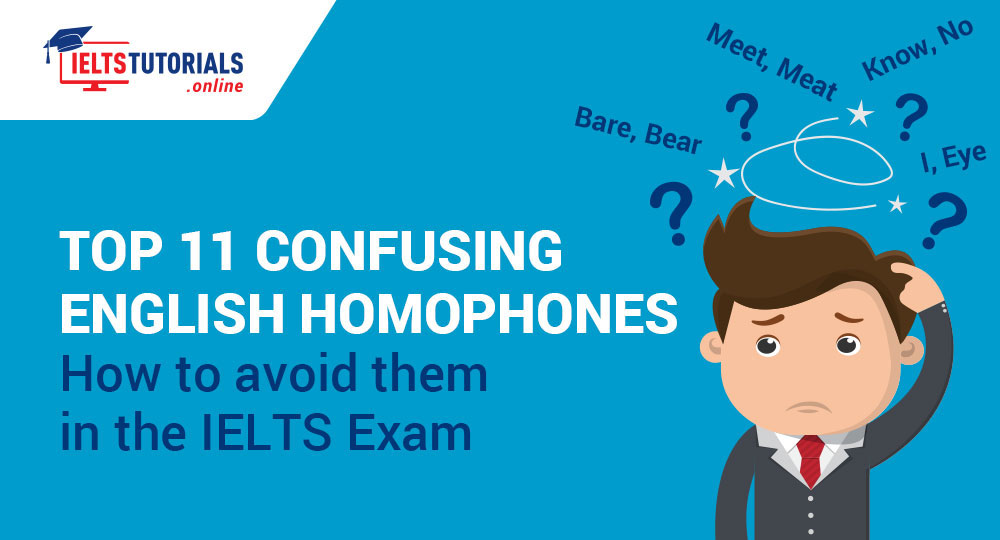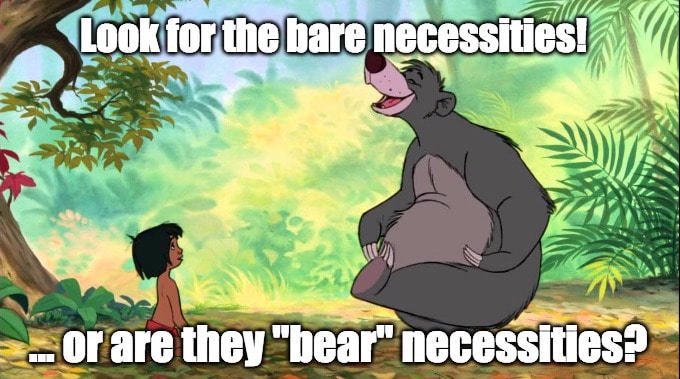
Top 11 Confusing English Homophones - How To Avoid Them
Do you often get confused by similar sounding words, yet they have completely different spellings?
Well, you're not alone, a silly mistake in spelling due to similar sounding words aka Homophones can be made even by the Native-English speakers.
Now, let's go to the root of this and try to understand different homophones.
"Homophones" is used to describe a word that sounds similar to another word, but has different meanings. Homophones originate from Greek Word "Homo" meaning same and "phone" meaning sound. The reason the English language has so many homophones is because English has many vowels, many silent letters and many words that has an origin from different languages, so as a result- Multiple Homophones!
They can be great fun when used in games or any dual-meaning jokes but can be a major losing point if used in important international exams like IELTS; writing the other similar-sounding word instead of the original, can completely change the meaning of the sentence.
Let us look at some common examples of Homophones that are used in everyday lives.
1. Bare, Bear:
Bare: It means uncovered, naked (she was walking bare foot); it also means basic, simple (these are the bare essentials of life.)

2. Meet, Meat:
Meet: Used to indicate a contact that has to be made between two people. (Let's meet today.)
Meat: Used to indicate the flesh of an animal. (I don't eat meat)
3. I, Eye:
I: It is a first person singular subject used by itself (I have to go now)
Eye: It's a part of your body you used to see (I think there's something in my eye)
4. Too, Two, To:
Too: It is used to indicate an "addition" (Does he have to come too?)
Two: this is the number (2) (The celebration went on for two days)
To: it is an infinitive verb such as "to swim" and also means towards "Go to the store"
5. There, Their, They're:
There: Used to describe a particular location (she was standing there)
Their: Used in terms of possession of something by someone. (We had to use their car)
They're: This is a contraction to "they are" (they're planning to go tomorrow)
6. Here, Hear:
Here: Used to describe a location near you. (she will come here soon.)
Hear: This means to listen a sound. (She lost the ability to hear.)
7. Son, Sun:
Son: Son is a male offspring (She has a son and a daughter)
Sun: The star which is at the centre of the solar system (Don't look at the sun directly)
8. Know, No:
Know: It means to be aware of something. (He should know how to behave.)
No: it means negative. (I asked him but he said no.)
9. Flour, Flower:
Flour: It is a powder obtained by grinding grain. (what kind of flour did you use in this dish.)
Flower: Formed by the seeds of a plant, usually they are colourful (He got me a bunch of flowers.)
10. Peace, Piece:
Peace: It is freedom from war, also meaning absolute silence and calm. (There is peace between the two countries.)
Piece: It is a unit or portion of a major thing (This piece of cloth is very soft)
11. Brake, Break:
Brake: This refers to the brakes of car, used to stop the vehicle. (Apply the brakes when you want to slow down the car.)
Break: This means to separate a thing into parts (Be careful! Don't break the glass). Also a short period of time for leisure; indicates a pause or a stop between tasks (You can take a break now)
So, these were some of the useful examples of homophones. Now you got to be careful to use the appropriate word at the appropriate time. For this, you should understand the meaning of the words first, and never memorise any sentences or paragraphs. And how you would do this? Practice! If you keep on practicing every day, you'll improve gradually! One way to do this is keeping a small notebook with you. Whenever you hear a new word, you can jot it down, write its meaning too. So, this way this notebook can become your book of homophones, where you can differentiate between similar sounding words easily. Especially if you're a visual learner, then this technique would be best for you.
In the IELTS exam, to avoid any such mistakes, read the questions first properly in the 30-minute gap you get before each section. Understand what the question requires, whether it demands "to" or "too" and predict what kind of word does it need!
At the end of the test, when you transfer your answers in to the answer sheet, check thoroughly whether the words you fill in matches the sentences and makes sense.
For best IELTS Test Preparation, you can access the Sample Questions page where you will find practice questions and model answers for each module! To score a band 7 or more in the IELTS Exam, you can also join Online Coaching for IELTS Mock Tests and Expert Guidance & Feedbacks If you need any assistance, we will always be at your service.